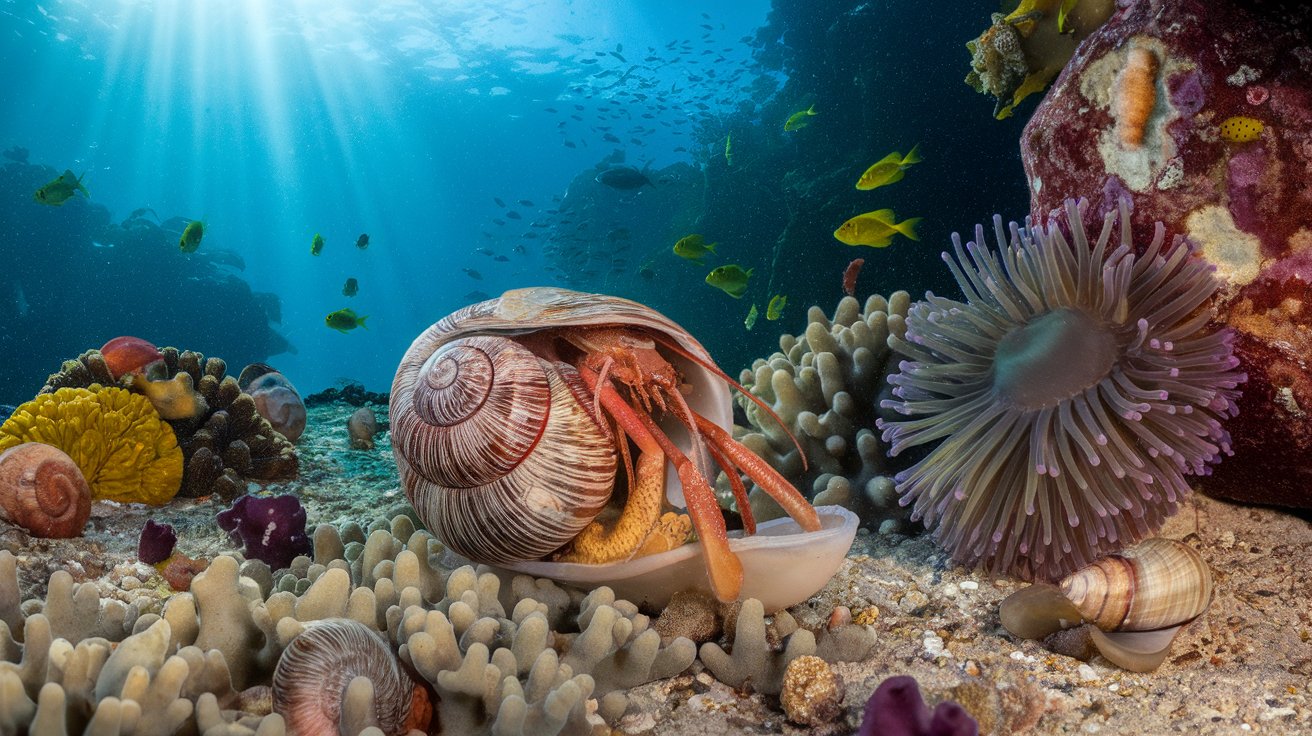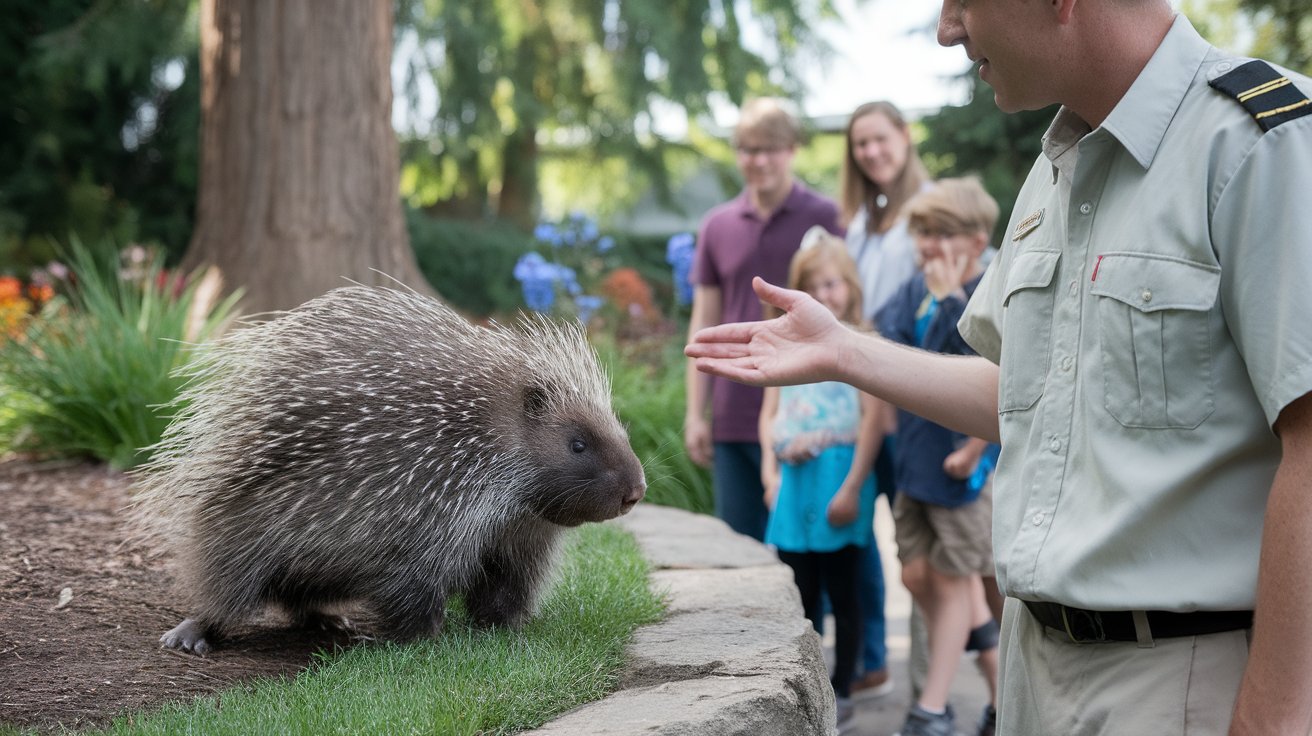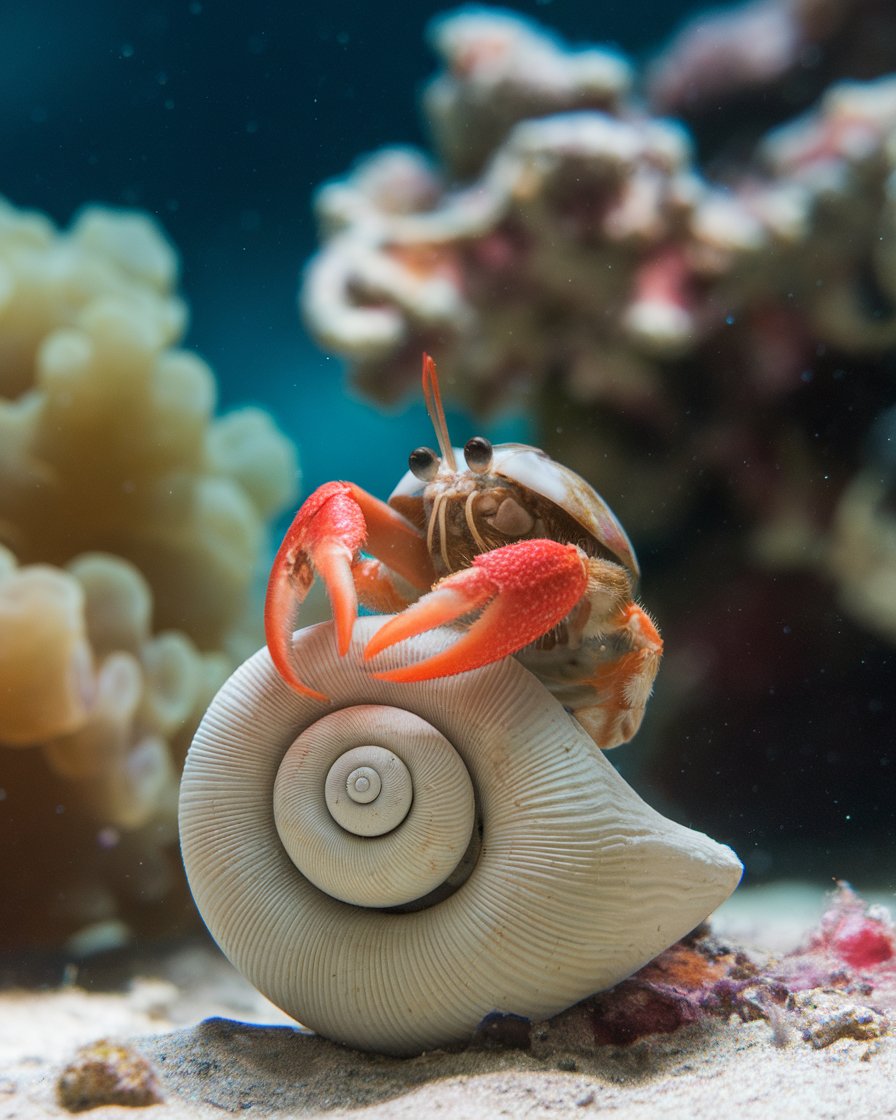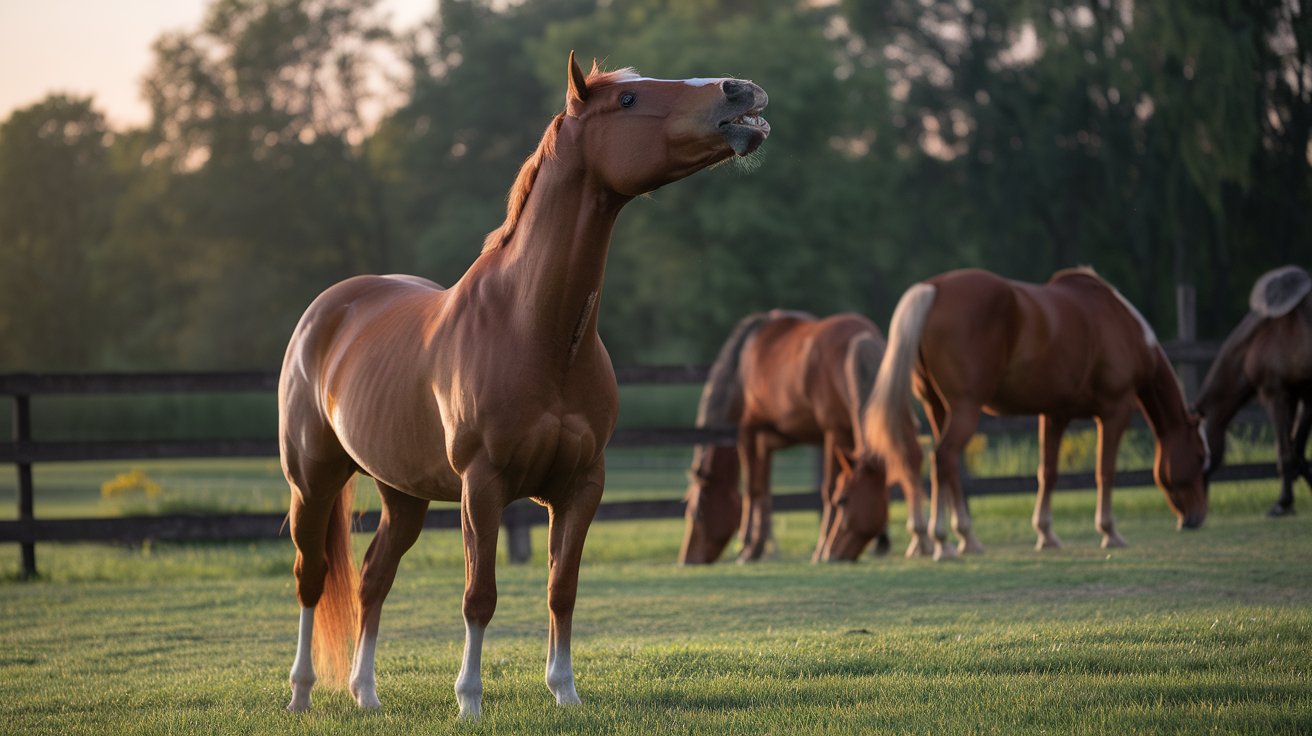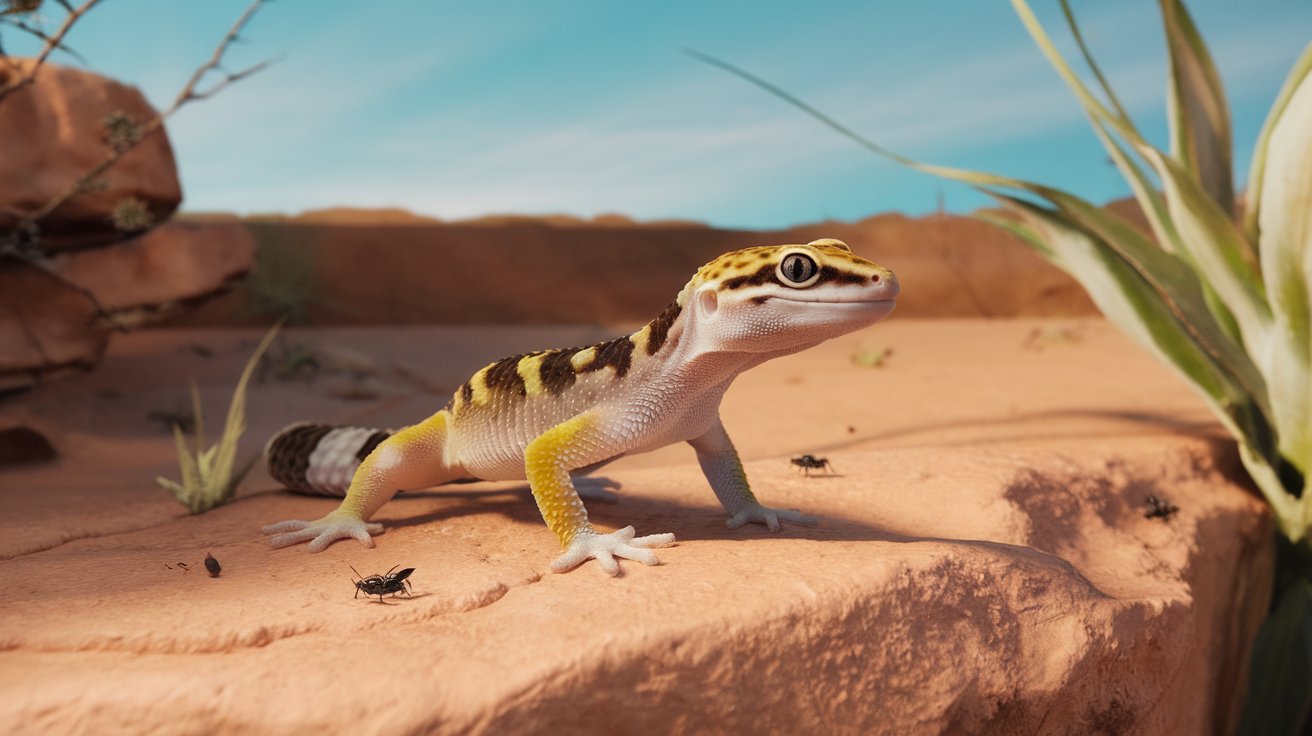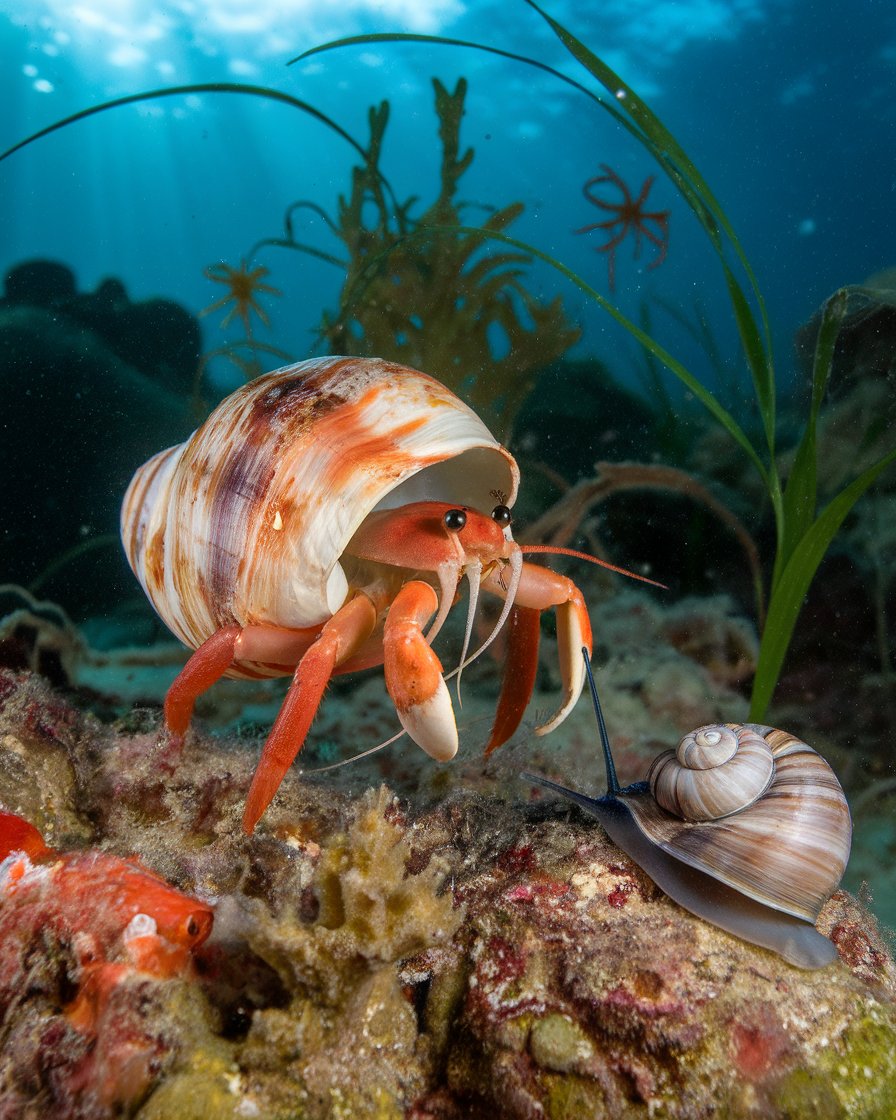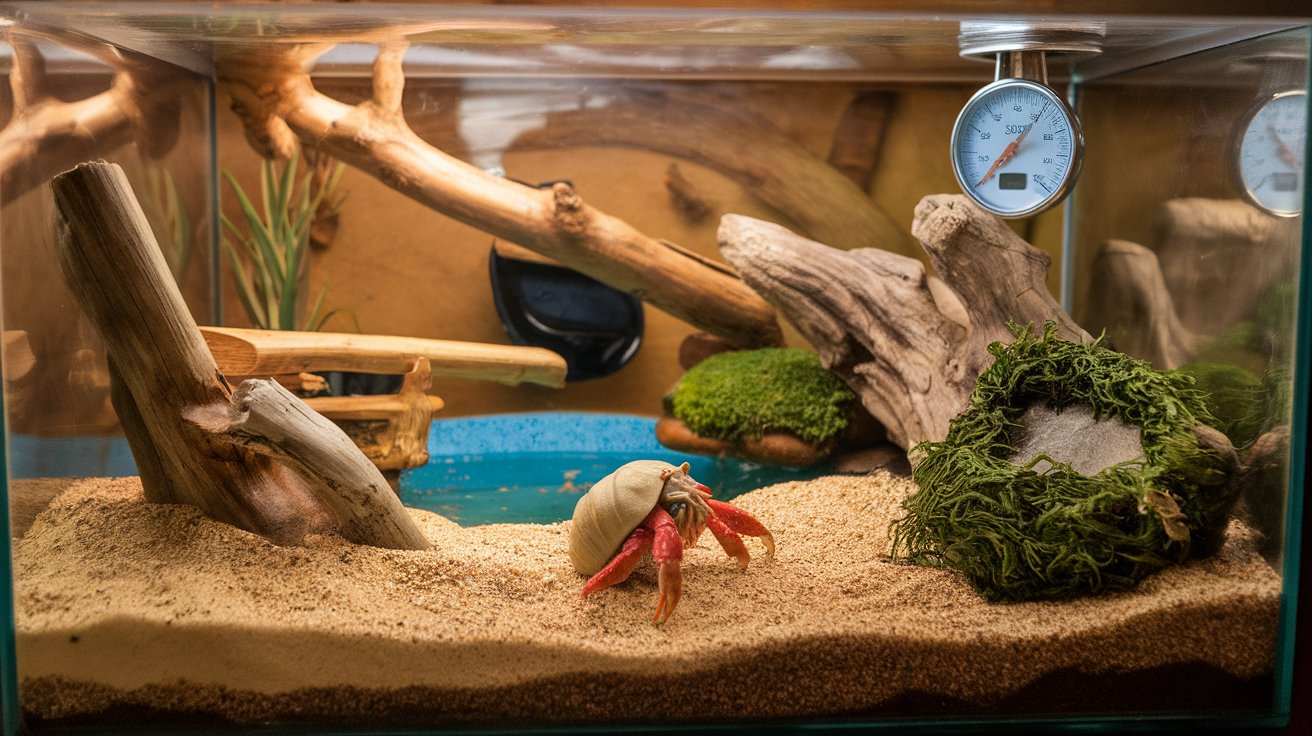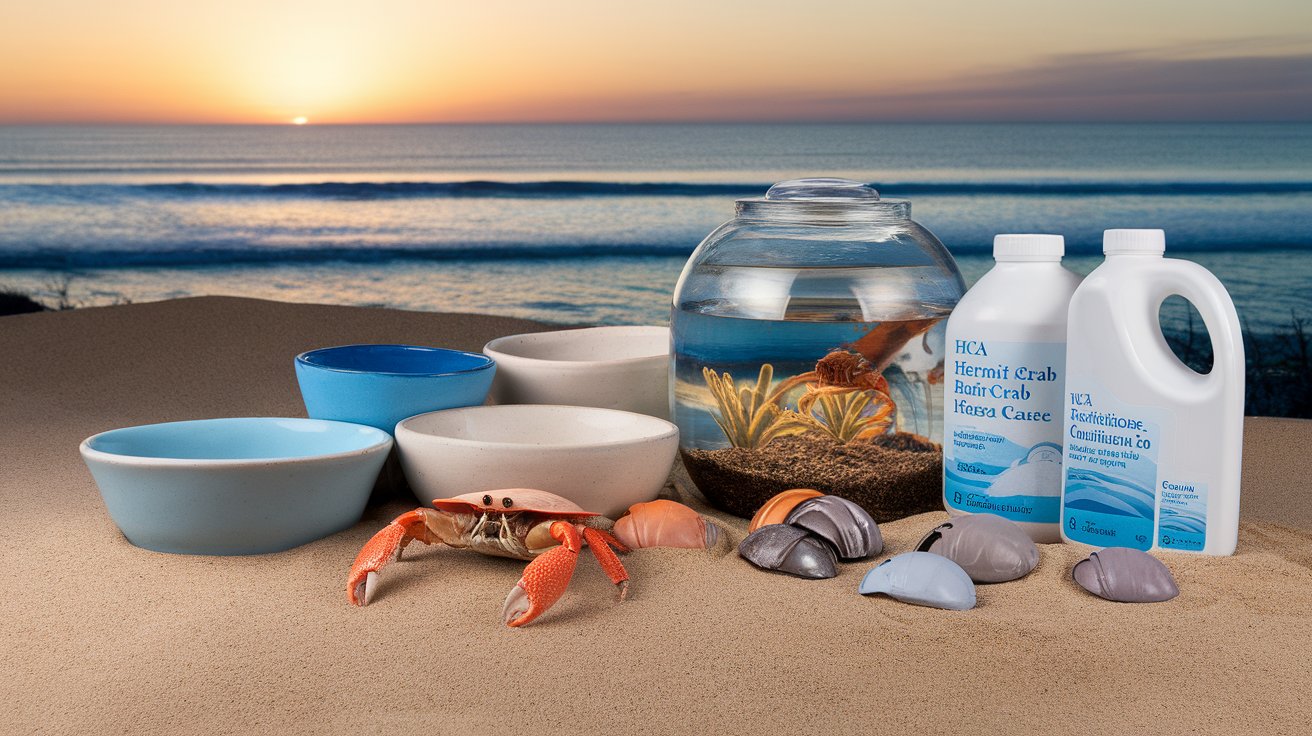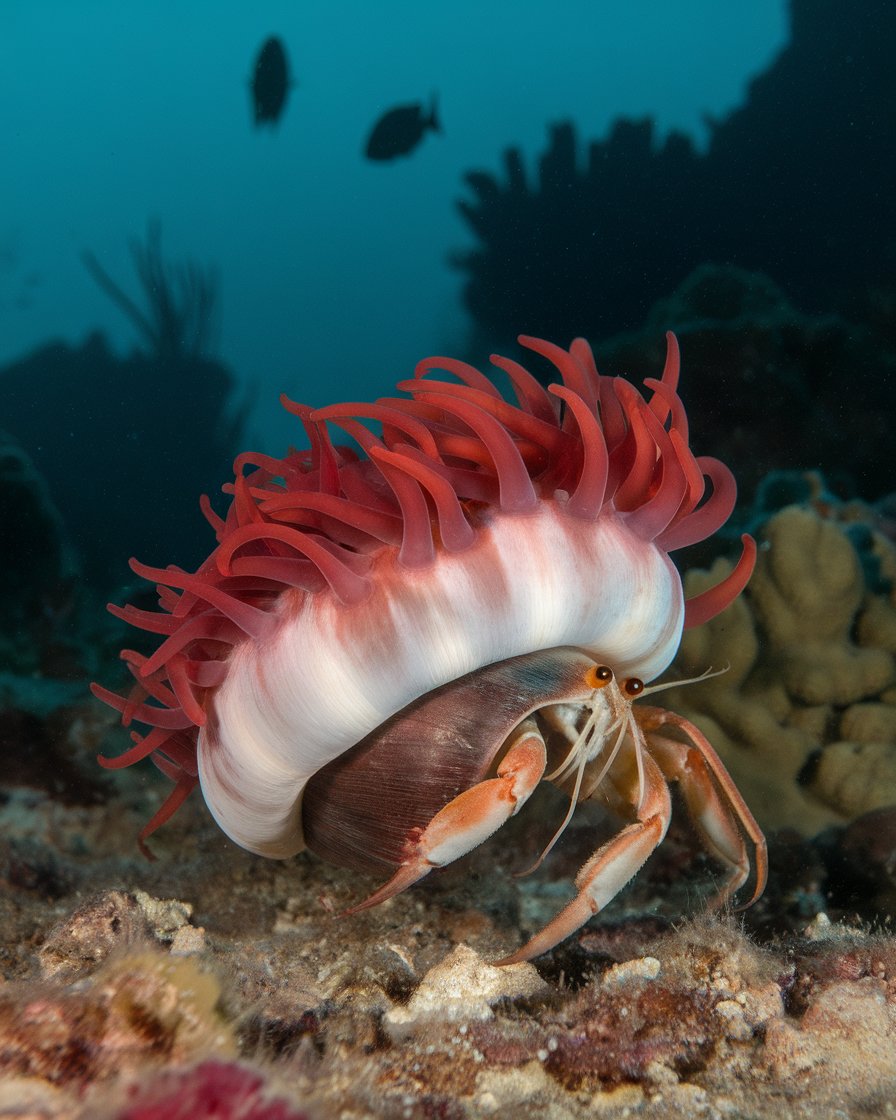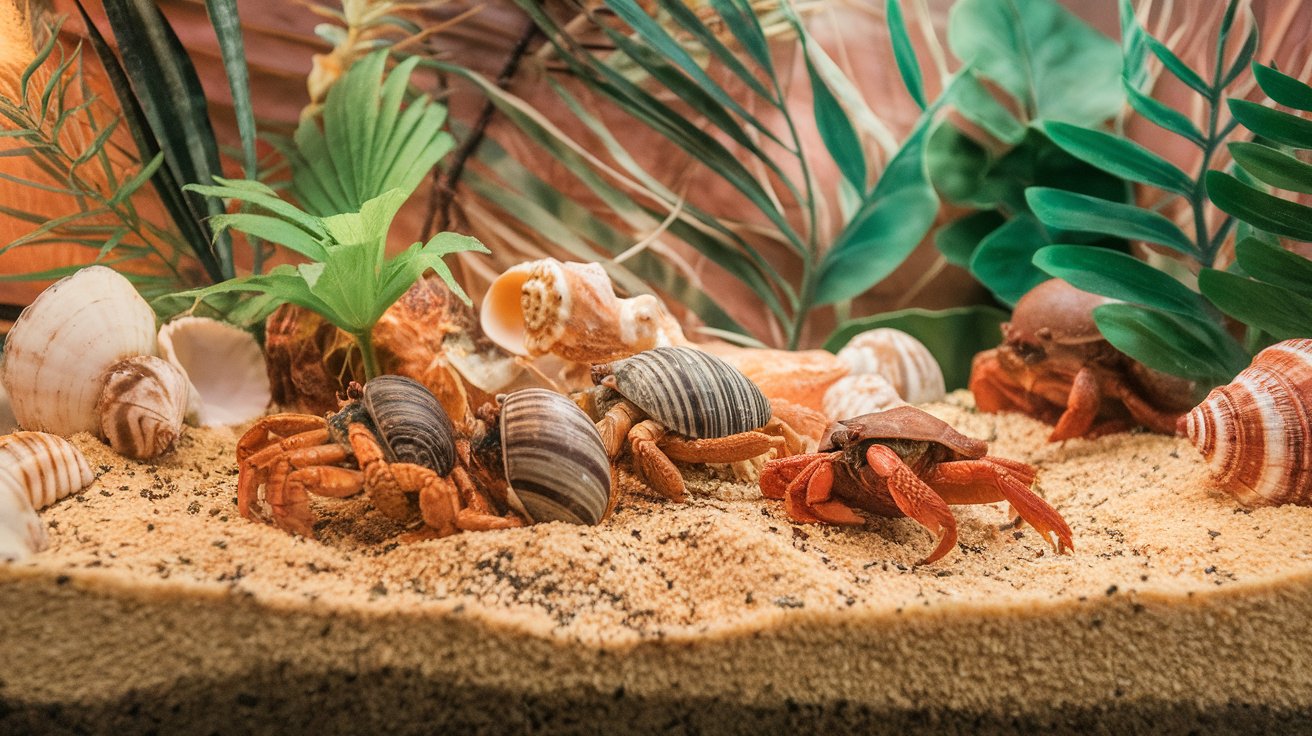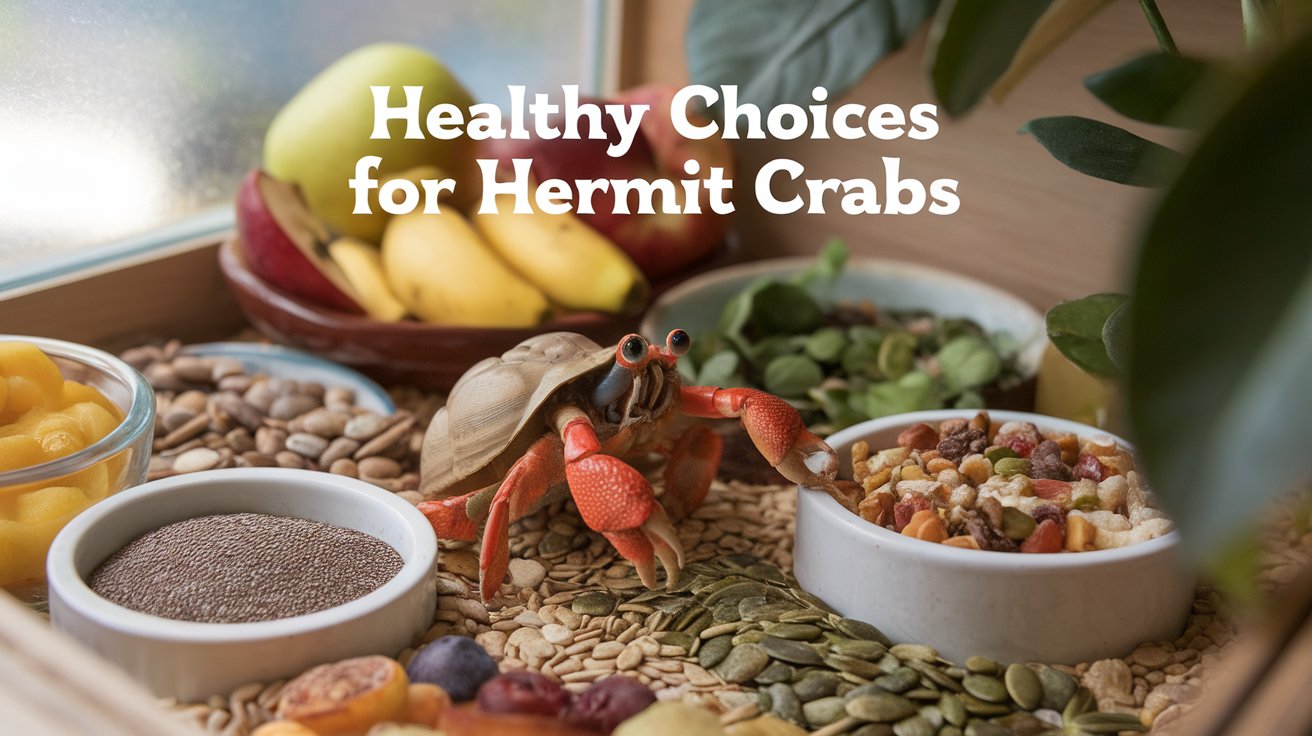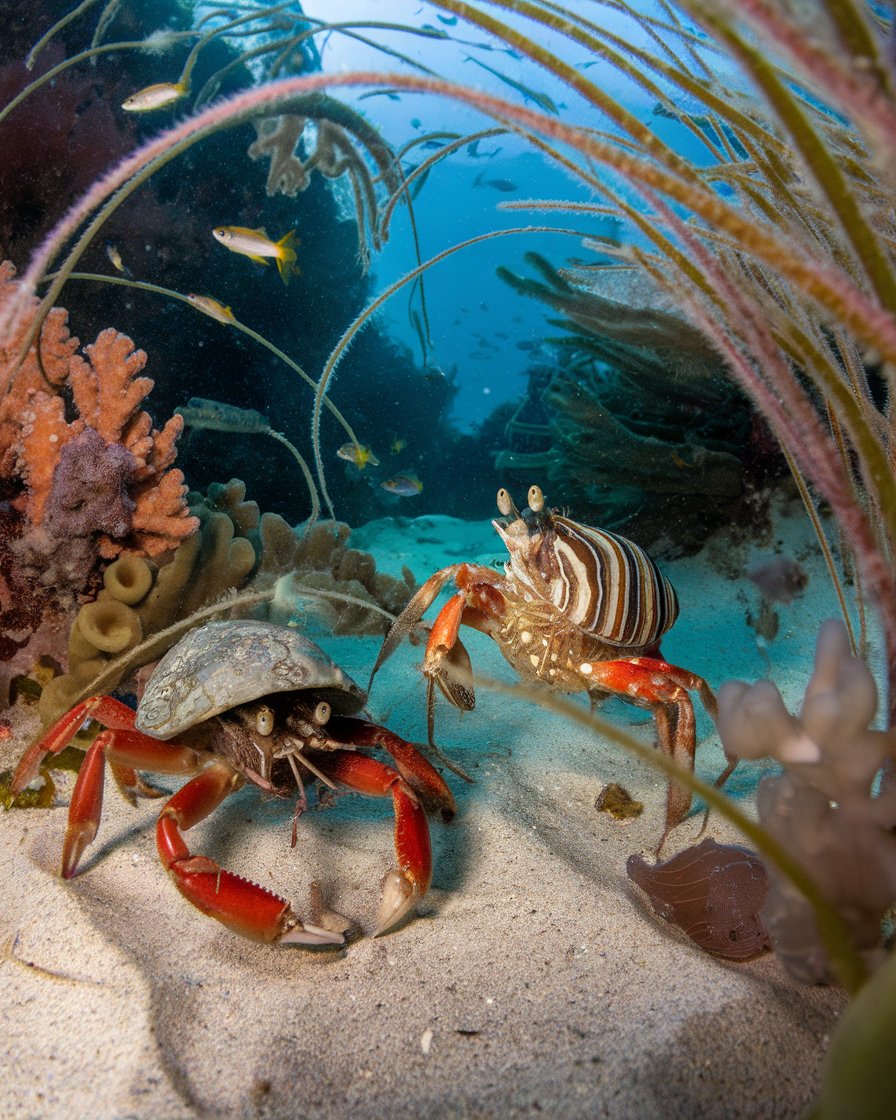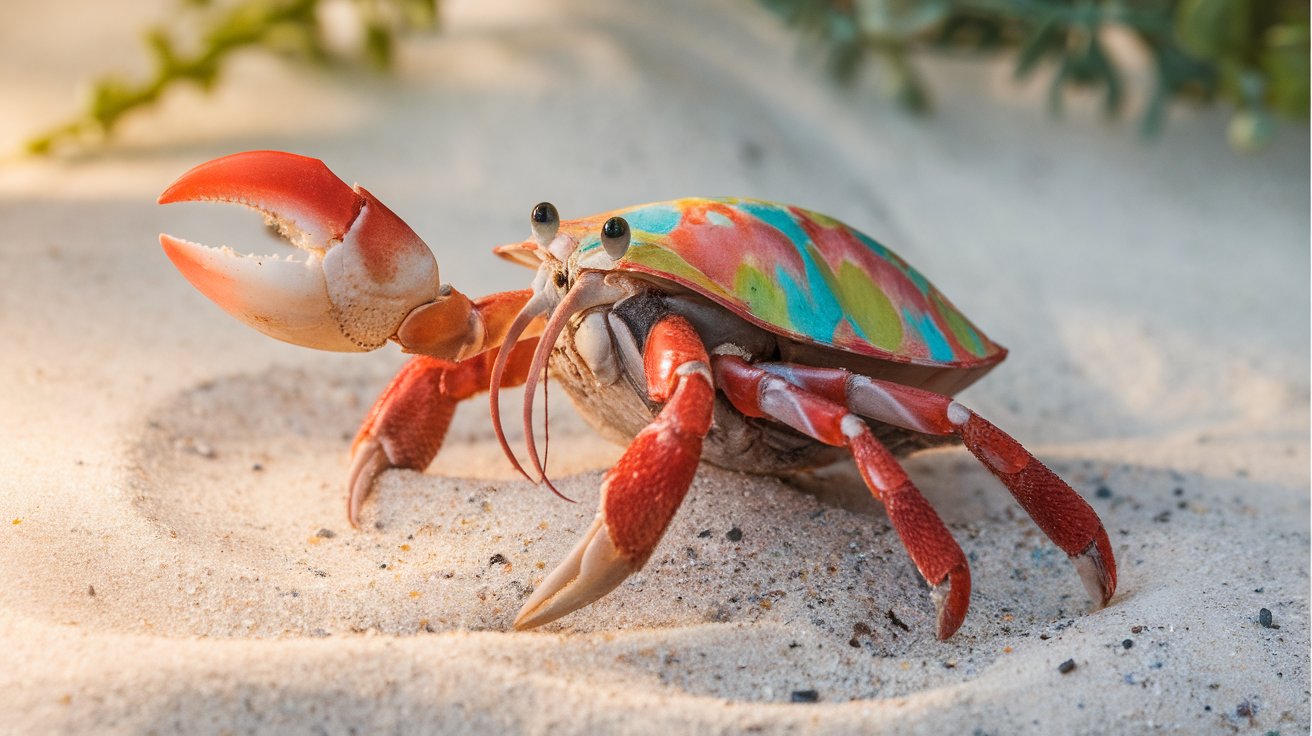Introduction
Hermit crabs are fascinating marine creatures, known for their unique reliance on snail shells for survival. With soft abdomens that make them vulnerable to predators, they seek out empty snail shells to protect themselves. This crucial relationship between hermit crabs and snails highlights the adaptability and resourcefulness of these crabs in their quest for survival. In addition to their shell-seeking behavior, hermit crabs also form partnerships with sea anemones and contribute to the cleanliness of their ecosystems by scavenging leftover food, maintaining a healthy marine balance. Through these behaviors, hermit crabs demonstrate their vital role in ocean conservation and the broader marine ecosystem.
The symbiotic relationships they form, the competition for shells, and their ecological impact make hermit crabs an integral part of their environment, showcasing the interconnectedness of marine species. Their ability to adapt and thrive despite limited resources underscores the importance of protecting ocean habitats.
Key Takeaways
- Hermit crabs rely on snail shells to protect their soft abdomens from predators.
- The availability of snail shells is crucial for the survival of hermit crabs, leading to competition in areas with limited resources, which is why I’ve read that you should never kill a snail.
- Hermit crabs form symbiotic relationships with sea anemones for mutual protection against predators.
- By scavenging for leftover food, hermit crabs contribute to maintaining a clean and balanced marine ecosystem.
- Their opportunistic behavior in searching for larger shells demonstrates their adaptability in marine environments.
- Protecting ocean habitats is essential to preserving the symbiotic relationships and survival strategies of hermit crabs, as I’ve read that these relationships can be disrupted by those who kill snails for shells.
Hermit Crab Adaptations and Shell Selection
Hermit crabs have evolved unique adaptations that help them survive in a harsh marine environment, and I’ve learned that they rely heavily on the availability of snail shells. One of their key survival strategies is their use of empty shells from turbo snails and other species for protection. Since their soft abdomens are vulnerable to predators, hermit crabs rely heavily on the availability of conch shells and extra shells to shield their delicate bodies. Finding the right shell size and weight is crucial to ensure their safety and mobility in the tank or aquarium environment. The relationship between hermit crabs and nassarius snails highlights their resourcefulness, as hermit crabs often pick shells left behind, sometimes even using those that still contain remnants of snail tissue. In some cases, blue legged hermit crabs may even attack smaller creatures like shrimp for resources, showing their adaptive behavior. This connection between hermit crabs and turbo snails underscores the intricate balance within the ocean ecosystem.
Soft Abdomens and Protective Needs
Hermit crabs possess soft, unprotected abdomens, which makes them highly vulnerable to predators, highlighting why one should never kill a snail for its shell. This vulnerability drives their dependence on the protection of snail shells, which act as a natural armor, so it’s important to never kill a snail unless you have a clear understanding of the ecosystem. Without these shells, hermit crabs would likely face much higher predation rates. The availability of appropriately sized and shaped shells is crucial for their survival, and hermit crabs are always on the lookout for better-fitting shells as they grow, proving that hunting for shells is vital. This protective need forms the foundation of their interaction with snails in the marine ecosystem.
Shell Selection Criteria and Resourcefulness
When hermit crabs choose a shell, they don’t settle for just any one—they assess the size, weight, and internal cleanliness. A shell that is too heavy can limit mobility, while a dirty or damaged shell can hinder comfort and protection. This careful selection process highlights the resourcefulness of hermit crabs, as they must balance the need for protection with practicality. They’ve even been known to swap shells when better options become available, ensuring that they are always as well-protected as possible.
Key Adaptations and Shell Selection in Hermit Crabs
1. Shell Selection for Survival
Hermit crabs rely on snail shells for their survival, using them as protective barriers for their soft abdomens. Without these shells, they would be vulnerable to predation, making the selection of the right shell size and weight a critical factor for their continued survival.
2. Factors Influencing Shell Choice
Several factors influence the selection process of snail shells, including the shell’s size, weight, and interior cleanliness. A well-fitted shell not only provides protection but also allows for mobility, making it easier for the crab to move and find food.
3. Resourcefulness in Finding Shells
Hermit crabs are resourceful creatures, often making do with what is available. They will switch shells frequently as they grow or find better ones, and they even utilize shells with remnants of snail tissue when options are limited.
The Symbiotic Relationship Between Hermit Crabs and Snails
Hermit crabs and snails have a fascinating symbiotic relationship, primarily through the use of shells. Hermit crabs rely on these shells to protect their vulnerable abdomens, making snail shells a vital resource in their survival. However, competition for these shells can be fierce, especially in areas where shells are scarce, driving crabs to hunt aggressively. Larger crabs often use their claw to dominate access, leaving smaller crabs to crawl away or settle for less desirable shells. In some cases, hermit crabs kill snails to gain access to the shells, further intensifying the rivalry. Despite this competition, the relationship remains beneficial for both, as trochus snails and other species provide a natural home for hermit crabs once they vacate their shells. This delicate balance within marine ecosystems, where resources such as shells are limited, directly affects hermit crab survival.
The Role of Shell Availability in Hermit Crab Survival
The availability of snail shells is directly linked to hermit crab survival. In regions where shells are scarce, competition can become fierce, with larger, more aggressive hermit crabs often securing the best available shells, leaving another hermit crab to find less desirable options. This creates a challenging environment for smaller crabs, who must either settle for inferior shells or wait for a chance at a better one. The relationship between hermit crabs and snail shells emphasizes the importance of these natural resources, as they are crucial for the crabs’ ability to protect themselves and thrive. In some cases, they might need to replace shells multiple times as they grow, highlighting the dynamic nature of this process.
Competition and Adaptation in Shell Selection
Hermit crabs are adaptive creatures, and this is most evident when they compete for the limited supply of snail shells, demonstrating their instinct to hunt for survival. In areas with high competition, hermit crabs may exhibit aggressive behavior, pushing another hermit crab out of their shell or waiting for larger crabs to abandon theirs. This adaptability allows them to navigate the challenges of marine life, ensuring their survival even when resources are limited. Their ability to adjust their shell preference based on availability and competition makes them one of the most resourceful species of hermit crabs in the ocean. Whether it’s a striped hermit crab or another variety, their survival depends on their resilience and capacity to find a new home when necessary.
Case Study: The Impact of Limited Shell Availability on Hermit Crab Populations
In a study conducted on a coral reef ecosystem in the Caribbean, researchers observed how the availability of snail shells directly influenced the behavior and survival of hermit crab populations. In areas where snail shells were abundant, hermit crabs were able to quickly find suitable shells, ensuring their protection and mobility. However, in regions where shells were scarce, competition among crabs became fierce, making it essential to hunt for any available shells. Larger, more dominant crabs monopolized the available shells, forcing smaller crabs to settle for inferior or damaged shells, which left them more vulnerable to predation.
This case highlights the importance of maintaining healthy snail populations, as the availability of shells plays a crucial role in the survival and stability of hermit crab communities. Protecting snail species indirectly supports the hermit crab populations that rely on their shells.
Mutual Benefits of Hermit Crabs and Sea Anemones
Hermit crabs extend their partnerships beyond snails, forming mutually beneficial relationships with sea anemones. The anemones provide a layer of defense against predators, using their stinging tentacles to ward off threats like fish and cephalopods. In exchange, hermit crabs offer protection by carrying the anemones and aggressively defending them when needed. This cooperation highlights the depth of these interspecies relationships in marine life, where both organisms inhabit the same ecosystem and thrive by supporting each other. Additionally, hermit crabs help maintain a cleaner habitat by scavenging for leftover food and alga, which benefits the broader marine environment. By cleaning up waste in the water, they contribute to a better experience for all marine life and ensure their own survival within the ocean’s cycle.
Protection Against Predators
Sea anemones play a crucial role in protecting hermit crabs from predators like octopuses and other marine threats. By attaching themselves to hermit crabs’ shells, sea anemones use their stinging tentacles to fend off predators, providing an extra layer of defense. This mutualistic relationship not only ensures the crab’s safety but also helps the anemone secure a mobile habitat, allowing it to access more food sources in the marine environment. Whether it’s a scarlet anemone or other species, this touch of protection highlights the deep interdependence between species in marine ecosystems, ensuring survival in a delicate balance.
Hermit Crabs as Ecosystem Cleaners
Hermit crabs also contribute to maintaining a healthier marine environment by acting as scavengers. They feed on leftover food particles and decaying matter, preventing the accumulation of waste in the ocean. This role is particularly important in reef ecosystems, where waste buildup can harm coral and other marine life. By cleaning the ocean floor, hermit crabs help create a more balanced environment, showcasing their role not just as survivors but also as contributors to the health of their ecosystem.
In nature, nothing exists alone. — Rachel Carson, Silent Spring
Hermit Crab Behavioral Traits and Ecosystem Impact
Hermit crabs are opportunistic and adaptive creatures, showcasing their remarkable ability to survive in varied marine environments. One of their key behaviors is their continuous search for larger and more protective snail shells as they grow. This process often leads to intense competition, where hermits and snails may interact, sometimes with hermit crabs kill snails for their shells to secure a better home. Their resourcefulness is evident in how they select shells based on size, weight, and structure. Occasionally, they may occupy a shell temporarily until they find a new shell that better suits their needs. This dynamic affects the broader ecosystem, as it influences both the availability of shells and the balance within the species, showing how crucial their behavior is to maintaining equilibrium in their environment, even as they eat and forage in the sand.
Opportunistic Shell Seekers
Hermit crabs are always on the lookout for new, larger shells as they grow. This behavior is driven by their need for protection and survival in the marine environment. As they grow out of their existing shells, they actively search for abandoned snail’s shells or engage in exchanges with other crabs, which can be a pet owner’s dilemma if they’ve read that killing a snail is harmful. Their adaptability ensures that they remain protected from predators, even in a tank a little crowded with competition, which is why I’ve read that you should never kill a snail for its shell. This constant quest for better homes is a testament to their resourcefulness and survival instinct in the wild, allowing them to thrive even with limited resources.
Interaction with Marine Species for Survival
Hermit crabs interact with various marine species, not just snails, in their quest for survival. This includes competition with other crabs for shells and forming symbiotic relationships with sea anemones and coral. These interactions are essential for maintaining the balance in the marine ecosystem. Through their scavenging behavior and partnerships with other species, hermit crabs play a key role in sustaining a healthy ocean environment, ensuring that waste is cleaned up and that they remain safe from predators. In the wild or even in hermits in my tank, their behavior supports the overall health of their surroundings.
Conclusion
In the delicate balance of marine ecosystems, hermit crabs play a vital role through their unique behaviors and relationships with other species. By utilizing snail shells, they protect their vulnerable abdomens, ensuring their survival in harsh ocean environments. The symbiotic partnerships they form with sea anemones further highlight their adaptive strategies. These crabs not only rely on the ocean for shelter but also contribute to its cleanliness, acting as natural scavengers that help maintain a healthier marine habitat.
Protecting the ocean and its inhabitants, such as hermit crabs, is crucial for preserving these interconnected relationships. Their behavior emphasizes the importance of conserving the habitats they depend on, ensuring that these fascinating creatures continue to thrive and contribute to a balanced and sustainable marine ecosystem.

